4,6-DIOXOHEPTANOIC ACID
Synonym(s):Succinylacetone;Succinylacetone-3,4,5,6,7-13C5
- CAS NO.:51568-18-4
- Empirical Formula: C7H10O4
- Molecular Weight: 158.15
- MDL number: MFCD00002797
- SAFETY DATA SHEET (SDS)
- Update Date: 2024-11-19 23:02:33

What is 4,6-DIOXOHEPTANOIC ACID?
Chemical properties
White Solid
The Uses of 4,6-DIOXOHEPTANOIC ACID
4,6-Dioxoheptanoic acid has been used:
- as component of dendritic cell conditioning medium and in the inhibition of ALA dehydratase (ALAD) in dendritic cells(50)
- as an inhibitor of heme biosynthesis in human mononuclear cells(51) and HeLa cells(52)
- as a standard for the quantification of succinylacetone from Plasmodium falciparum cultures(53)
The Uses of 4,6-DIOXOHEPTANOIC ACID
Succinylacetone (SA) is a specific marker for the inherited metabolic disease, hepatorenal tyrosinemia. It was developed a stable-isotope quid urine using a 13C4-SA as internal standard.
What are the applications of Application
Succinylacetone is a catabolic byproduct of tyrosine breakdown and an inhbitor of heme biosynthesis.
Definition
ChEBI: A dioxo monocarboxylic acid that is heptanoic acid in which oxo groups replace the hydrogens at positions 4 and 6. It is an abnormal metabolite of the tyrosine metabolic pathway and a marker for type 1 tyrosinaemia.
Biochem/physiol Actions
4,6-Dioxoheptanoic acid is an inhibitor of heme biosynthesis. It is a catabolic byproduct of tyrosine breakdown and inhibits δ-aminolevulinic acid (ALA) dehydratase enzyme. It is a potential marker for detecting tyrosinemia type I and is measured in dried blood spot of new borns.
Properties of 4,6-DIOXOHEPTANOIC ACID
| Melting point: | 66-67 °C(lit.) |
| Boiling point: | 318.7±17.0 °C(Predicted) |
| Density | 1.189±0.06 g/cm3(Predicted) |
| storage temp. | 2-8°C |
| solubility | Chloroform (Slightly), DMSO (Slightly), Methanol (Slightly) |
| form | powder |
| pka | 4.54±0.17(Predicted) |
| color | White to Off-White |
| CAS DataBase Reference | 51568-18-4 |
Safety information for 4,6-DIOXOHEPTANOIC ACID
| Signal word | Warning |
| Pictogram(s) |
 Exclamation Mark Irritant GHS07 |
| GHS Hazard Statements |
H315:Skin corrosion/irritation H319:Serious eye damage/eye irritation H335:Specific target organ toxicity, single exposure;Respiratory tract irritation |
| Precautionary Statement Codes |
P261:Avoid breathing dust/fume/gas/mist/vapours/spray. P264:Wash hands thoroughly after handling. P264:Wash skin thouroughly after handling. P271:Use only outdoors or in a well-ventilated area. P280:Wear protective gloves/protective clothing/eye protection/face protection. P302+P352:IF ON SKIN: wash with plenty of soap and water. P305+P351+P338:IF IN EYES: Rinse cautiously with water for several minutes. Remove contact lenses, if present and easy to do. Continuerinsing. |
Computed Descriptors for 4,6-DIOXOHEPTANOIC ACID
New Products
Tert-butyl bis(2-chloroethyl)carbamate (S)-3-Aminobutanenitrile hydrochloride N-Boc-D-alaninol N-BOC-D/L-ALANINOL N-octanoyl benzotriazole 4-Hydrazinobenzoic acid 3,4-Dibenzyloxybenzaldehyde 1,1’-CARBONYLDIIMIDAZOLE R-2-BENZYLOXY PROPIONIC ACID 1,1’-CARBONYLDI (1,2-4 TRIAZOLE) 4-HYDROXY BENZYL ALCOHOL 3-NITRO-2-METHYL ANILINE (2-Hydroxyphenyl)acetonitrile 4-Bromopyrazole 5-BROMO-2CYANO PYRIDINE 5,6-Dimethoxyindanone 5-broMo-2-chloro-N-cyclopentylpyriMidin-4-aMine 4-methoxy-3,5-dinitropyridine 2-(Cyanocyclohexyl)acetic acid 2-aminopropyl benzoate hydrochloride 1-(4-(aminomethyl)benzyl)urea hydrochloride tert-butyl 4- (ureidomethyl)benzylcarbamate diethyl 2-(2-((tertbutoxycarbonyl)amino) ethyl)malonate Ethyl-2-chloro((4-methoxyphenyl)hydrazono)acetateRelated products of tetrahydrofuran
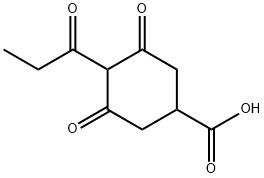

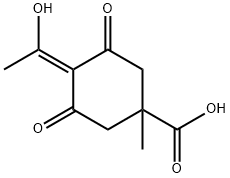
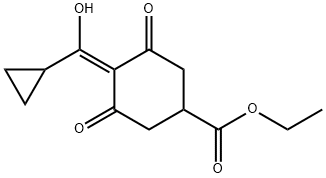

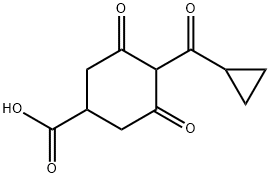
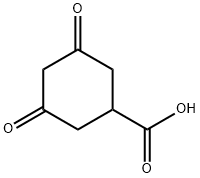

You may like
-
 4,6-Dioxoheptanoic acid CAS 51568-18-4View Details
4,6-Dioxoheptanoic acid CAS 51568-18-4View Details
51568-18-4 -
 55441-95-7 99%View Details
55441-95-7 99%View Details
55441-95-7 -
 N-Vinylformamide 99%View Details
N-Vinylformamide 99%View Details
13162-05-5 -
 Chloro Uracil 1820-81-1 99%View Details
Chloro Uracil 1820-81-1 99%View Details
1820-81-1 -
 207557-35-5 99%View Details
207557-35-5 99%View Details
207557-35-5 -
 2-ethyl-6-methyl-3-hydroxypyridine succinate 99%View Details
2-ethyl-6-methyl-3-hydroxypyridine succinate 99%View Details
127464-43-1 -
 2-ETHYLPYRIDINE 100-71-0 99%View Details
2-ETHYLPYRIDINE 100-71-0 99%View Details
100-71-0 -
 181228-33-1 (S)-Methyl 3-amino-2-((tert-butoxycarbonyl)amino)propanote Hydrochloride (DAP-OMe. HCl) 99%View Details
181228-33-1 (S)-Methyl 3-amino-2-((tert-butoxycarbonyl)amino)propanote Hydrochloride (DAP-OMe. HCl) 99%View Details
181228-33-1